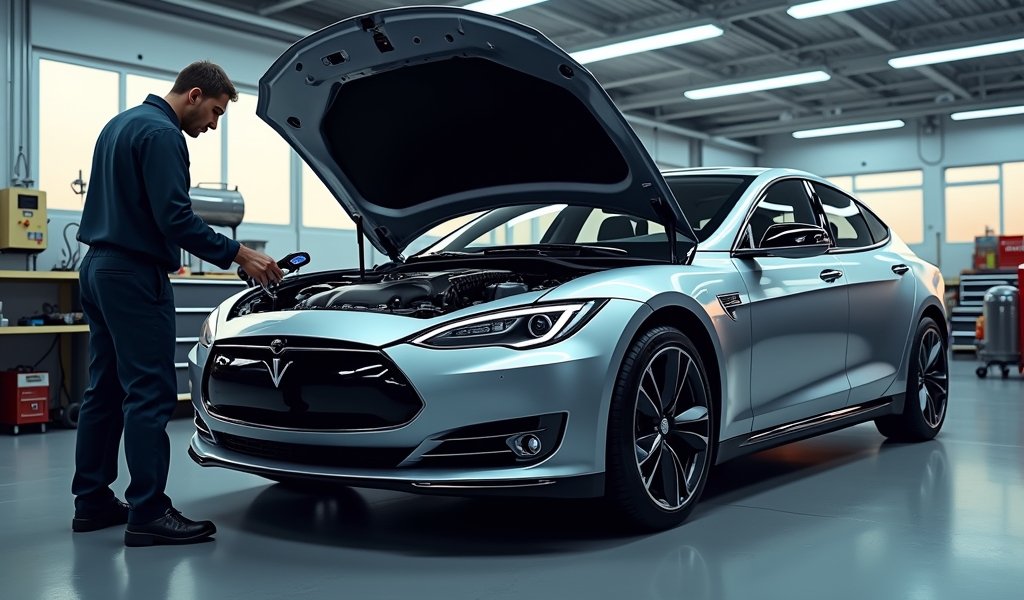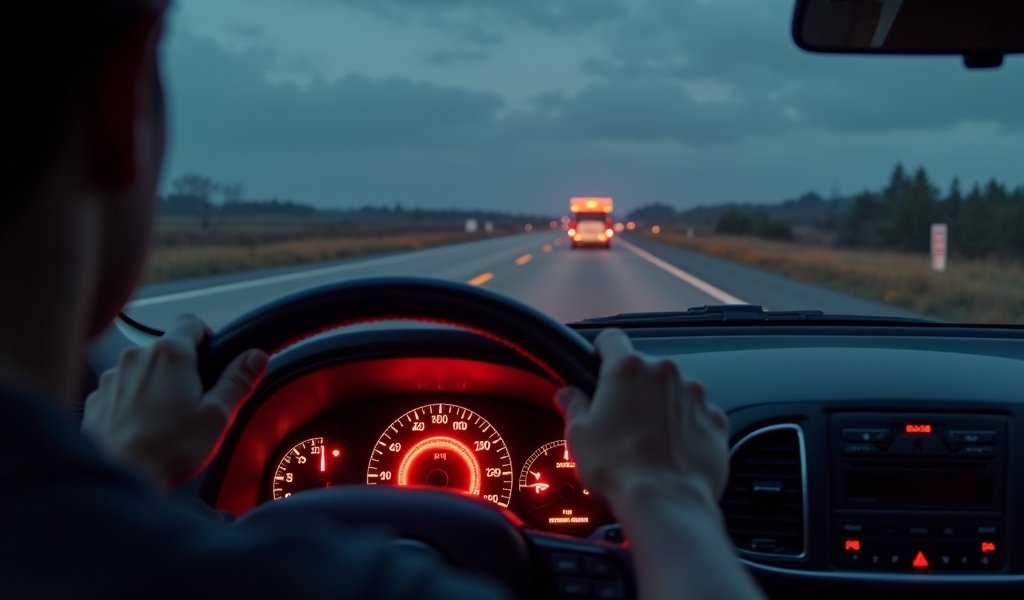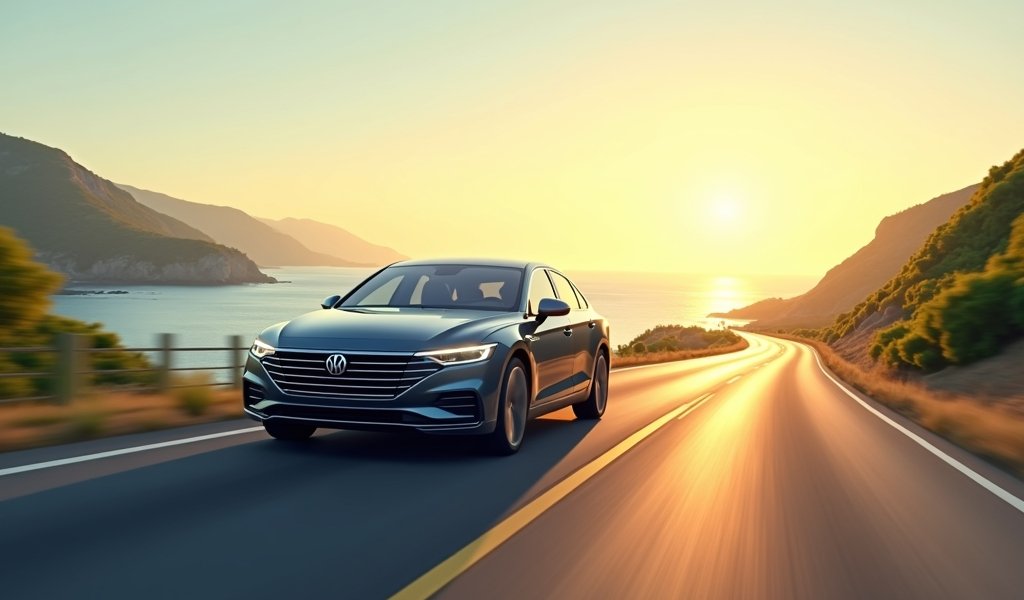Overview
This guide offers practical strategies to maximize fuel efficiency on road trips through proper vehicle maintenance, smooth driving techniques, and smart route planning. Key recommendations include keeping tires properly inflated, maintaining a moderate speed (50-60mph), using air conditioning strategically, traveling during off-peak hours, and avoiding premium fuel unless specifically required for your vehicle.
Table of Contents
- The Great Gas Wallet Squeeze
- Pre-Trip Prep: Setting Your Ride Up for Success
- Driving Habits That Make Your Fuel Tank Smile
- Smart Route Planning: The Road Less Expensive
- Climate Control & Accessories: The Hidden Fuel Thieves
- Fuel Selection: Picking Your Potion Wisely
- Conclusion: Miles of Smiles, Lighter on the Wallet
- Frequently Asked Questions
The Great Gas Wallet Squeeze
Gas prices playing hopscotch with your budget again? You’re not alone. As a mechanic who’s helped countless road warriors squeeze more miles from their tanks, I’ve seen the pain at the pump reflected in my customers’ eyes – and their maintenance decisions.
The humble road trip – that quintessential American adventure – now comes with a side of financial planning that would make your accountant sweat. But here’s the thing: mastering fuel efficiency isn’t just about saving greenbacks (though that’s a mighty fine benefit). It’s about being kinder to both your vehicle and our blue marble of a planet.
Think of good fuel efficiency as that friend who always splits the check fairly. When done right, you could save hundreds on a long journey – money better spent on memorable experiences than combustion chambers. A 5 MPG improvement over a 1,000-mile adventure can keep an extra $40-50 in your pocket – that’s a couple of decent meals or a night’s motel upgrade from “slightly sketchy” to “actually pleasant.”
So grab a cup of joe and let’s dive into the art and science of stretching that tank. These aren’t just tips – they’re the difference between “We need to stop for gas again?” and “Wow, we’re still above half a tank?”

Pre-Trip Prep: Setting Your Ride Up for Success
Maintenance Magic: The Invisible Efficiency Booster
Listen, I’ve spent decades under hoods, and I’ll tell you straight – a well-maintained vehicle is a fuel-efficient vehicle. Period. No debate. End of story.
First things first: that engine of yours needs regular tune-ups like plants need water. A properly tuned engine can improve fuel efficiency by up to 4%. I tell my customers, “Skip the tune-up, and your car will drink gas like a sailor on shore leave.”
That check engine light you’ve been ignoring? It might as well be a tiny dashboard vampire sucking gas money from your wallet. A faulty oxygen sensor alone can slash your fuel economy by 40%. I’ve seen it happen more times than I can count.
Fresh oil changes aren’t just mechanic propaganda – they’re efficiency goldmines. Clean oil reduces internal friction, which means your engine doesn’t have to work as hard to do its job. Improving your car’s fuel efficiency starts with these basic maintenance steps.
And for heaven’s sake, change your air filter! A clogged filter is like making your car breathe through a coffee stirrer. The Department of Energy estimates that a clean air filter can improve acceleration time and fuel economy by up to 10% in older vehicles. That’s not pocket change, folks.
Tire Talk: Where the Rubber Meets Efficiency
You know what grinds my gears? Seeing perfectly good vehicles riding around on underinflated tires. It’s like watching someone throw money out the window in slow motion.
Here’s the cold, hard truth: underinflated tires increase rolling resistance, forcing your engine to work harder. For every 1 PSI drop below recommended pressure, you can kiss goodbye to about 0.2% of your fuel economy. Multiply that across four tires that might be 5-10 PSI low, and suddenly you’re looking at a 4-8% efficiency hit!
- Check pressure when tires are cold (before driving more than a mile)
- Follow the PSI recommendation on your doorjamb sticker, NOT the maximum on the tire
- Don’t forget to check the spare if you’re heading on a long journey
And please – pretty please with a cherry on top – get your wheels aligned if your steering wheel shakes or your car pulls to one side. Misaligned wheels drag sideways slightly, and that’s like driving with the parking brake partially engaged. Not great for the fuel gauge, I promise you that.
According to the Department of Energy’s fuel economy site, proper tire maintenance alone can improve your mileage by up to 3% – nothing to sneeze at when you’re covering hundreds of miles.
Lighten Up: Every Pound Counts
Let me share a professional secret: your car is not a storage locker. That collection of sports equipment, books, tools and “might need it someday” items in your trunk? They’re all tiny fuel thieves.
Physics doesn’t lie – an extra 100 pounds in your vehicle reduces fuel economy by about 1%. That might not sound like much, but on a 1,000-mile road trip, it adds up faster than gas station snack prices.
“But I need my stuff!” I hear you cry. Fair enough – just be strategic. Ask yourself: “Will I actually use this on this specific trip?” If not, it stays home.
And that roof cargo box? Great for space, terrible for aerodynamics. It can decrease fuel economy by 2-8% in city driving and a whopping 10-25% at highway speeds. If you absolutely need it, load it efficiently and remove it when not in use.
Driving Habits That Make Your Fuel Tank Smile
The Need for (Less) Speed
I know, I know – the open road calls and your right foot gets heavy. But here’s what 30 years under the hood has taught me: speed is the single biggest factor in fuel consumption at your control.
Most vehicles reach peak efficiency between 50-60 mph. After that, it’s like throwing dollar bills out the window. Every 5 mph over 50 mph is essentially paying an extra $0.20 per gallon for gas. At 80 mph? You’re effectively handing over an extra $1.20 per gallon.
Cruise control is your friend on flat highways – it maintains speed better than even the steadiest human foot. However – and this is important – on hilly terrain, manual control often works better because you can anticipate the landscape and adjust accordingly.
I tell my customers to think about their gas pedal like a money valve. The deeper you press, the faster cash flows out of your wallet.
Smooth Operator: The Gentle Art of Acceleration
Here’s a professional tip from the trenches: imagine there’s an egg between your foot and the accelerator. Now drive without breaking that egg.
Jackrabbit starts are the enemy of fuel efficiency. Aggressive acceleration can lower your gas mileage by up to 30% on highways and 40% in stop-and-go traffic. That’s not small potatoes.
The most efficient driving style? Smooth, gradual acceleration followed by early coasting toward stops. When you see a red light ahead, take your foot off the gas early and let momentum carry you. The light might turn green before you stop completely – and accelerating from a roll uses less fuel than from a dead stop.
I always say, “Drive like you have an open cup of coffee on your dashboard.” Your fuel gauge – and your actual coffee – will thank you.
The Idle Truth
Let’s bust a myth that’s costing you money: modern engines don’t need to idle for minutes before driving. Ten seconds of idling uses more fuel than restarting your engine.
If you’ll be stopped for more than 30 seconds (except in traffic), turn off your engine. That drive-thru line moving at glacial speed? Park and go inside instead. Your wallet will thank you.
I’ve had customers argue this point, especially in winter. “But what about warming up the car?” Unless you’re driving something built before the Reagan administration, 30 seconds is plenty in most weather conditions. The engine warms up more efficiently when actually driving (gently) than sitting stationary.
Smart Route Planning: The Road Less Expensive
The Shortest Distance Between Savings
Here’s something they didn’t teach us in driver’s ed: the shortest route isn’t always the most fuel-efficient. Sometimes, a slightly longer route with better flowing traffic saves both fuel and sanity.
Modern navigation apps have made this easier than ever. Google Maps now offers “eco-friendly” routes that might take a minute or two longer but save significant fuel. Gas price apps for road trips can also help you find the cheapest places to fill up along your route.
Hills are fuel guzzlers – your engine works overtime climbing them. When feasible, choose flatter routes for better efficiency. Your transmission will send you a thank-you note (well, it would if it could write).
Timing is Everything
Rush hour is not just a headache – it’s a fuel drain. Stop-and-go traffic is basically your mpg’s worst nightmare. If possible, schedule your driving during off-peak hours.
I’ve had customers shave 15% off their fuel consumption simply by leaving an hour earlier or later to avoid congestion. That’s the kind of free efficiency boost you can’t buy at any parts store.
Planning bathroom breaks and food stops strategically also helps. Combine errands and stops to minimize the number of cold starts, which use more fuel than when the engine is already warm.
Preparing your car for a road trip with a solid maintenance check and thoughtful route planning creates a double-whammy of efficiency that can significantly extend your range between fill-ups.

Climate Control & Accessories: The Hidden Fuel Thieves
The Great A/C Debate
Windows down or A/C on? It’s the fuel efficiency question that’s launched a thousand arguments. Let me settle this once and for all, based on both experience and scientific research:
At highway speeds (over 50 mph), use your A/C. The aerodynamic drag from open windows actually uses more fuel than running the air conditioner.
At lower speeds (under 40 mph), windows down beats A/C for efficiency. City cruising? Crack those windows. Highway hauling? Crank that A/C.
The real efficiency killer? Setting your A/C to arctic temperatures. Each degree cooler requires more fuel. Setting it to 75°F instead of 68°F can make a noticeable difference in consumption.
Electrical Vampires
Your car’s alternator doesn’t generate electricity for free – it puts load on the engine, which drinks more fuel. Modern vehicles are packed with power-hungry gadgets that each take a small sip from your tank.
The difference isn’t massive, but it adds up. High-draw items like heated seats and rear window defrosters can increase fuel consumption by 1-4% when running continuously. If you’re pinching pennies at the pump, use them sparingly.
Consider charging devices at your overnight stops rather than from your vehicle’s USB ports while driving. Every little bit helps on a long journey where the miles (and dollars) stack up quickly.
Fuel Selection: Picking Your Potion Wisely
Premium vs. Regular: The Expensive Myth
I can’t tell you how often I’ve seen this mistake: drivers putting premium fuel in vehicles that don’t require it, thinking they’re giving their car a treat. Unless your owner’s manual specifically requires premium fuel, you’re just burning money.
Higher octane fuel doesn’t provide better performance or fuel economy in engines designed for regular gas. It’s like buying expensive bottled water for your houseplants – they can’t tell the difference.
Check your owner’s manual. If it says “regular unleaded gasoline” or “87 octane,” save your money and skip the premium options. What your engine is designed to use is what it runs most efficiently on – no more, no less.
Filling Finesse
Let’s talk technique. When filling up, don’t squeeze the trigger like you’re in a gas-pumping competition. A slower fill reduces the chance of fuel “kick-back” and helps prevent the pump from shutting off prematurely.
And please – stop “topping off” after the pump clicks. Modern pumps are designed to shut off at the right moment. Continuing to add fuel can overwhelm your vehicle’s vapor recovery system, potentially leading to fuel leaks, environmental harm, and even engine problems down the road.
As for the best time to fill up? Early morning or evening when it’s cooler outside. Gasoline is slightly denser in cooler temperatures, so you get a tiny bit more fuel for your money. It’s not a game-changer, but hey – I’m all about maximizing efficiency wherever possible.
Conclusion: Miles of Smiles, Lighter on the Wallet
After three decades of watching the relationship between driving habits and fuel consumption, I can tell you with absolute certainty: these tips work. They’re not theoretical – they’re proven in the real world, on real roads, with real savings.
The beauty of fuel efficiency is that small changes add up to significant savings. Implement even half of what we’ve covered, and you could easily improve your fuel economy by 10-15% on your next road trip.
For the average driver covering 12,000 miles annually, that’s a savings of $200-400 per year at current gas prices. Multiply that over the life of your vehicle, and we’re talking thousands of dollars – all while reducing your carbon footprint and extending your vehicle’s lifespan.
Remember that fuel efficiency isn’t just a destination – it’s an ongoing journey. These habits, once formed, become second nature. Your wallet, your vehicle, and our planet will all be healthier for it.
Now hit the road – efficiently! – and enjoy the journey as much as the destination. After all, that’s what road trips are all about.
Frequently Asked Questions
Does cruise control always save fuel?
On flat highways, yes. On hilly terrain, manual control is often more efficient as you can anticipate and adapt to changing grades.
How much does a roof rack affect fuel economy?
An empty roof rack can reduce fuel economy by about 1-5%. A loaded roof cargo box can decrease efficiency by 10-25% at highway speeds.
Is it better to fill up in the morning or evening?
Slightly better in cooler temperatures (morning/evening) as gasoline is denser when cold. The difference is minimal but can add up over time.
Do fuel additives actually improve mileage?
Most aftermarket fuel additives provide little to no benefit for modern vehicles. Your money is better spent on proper maintenance than miracle fuel treatments.
How much does proper tire inflation matter?
For every 1 PSI drop below recommended pressure, you lose about 0.2% in fuel economy. Properly inflated tires can improve mileage by up to 3% compared to underinflated ones.

